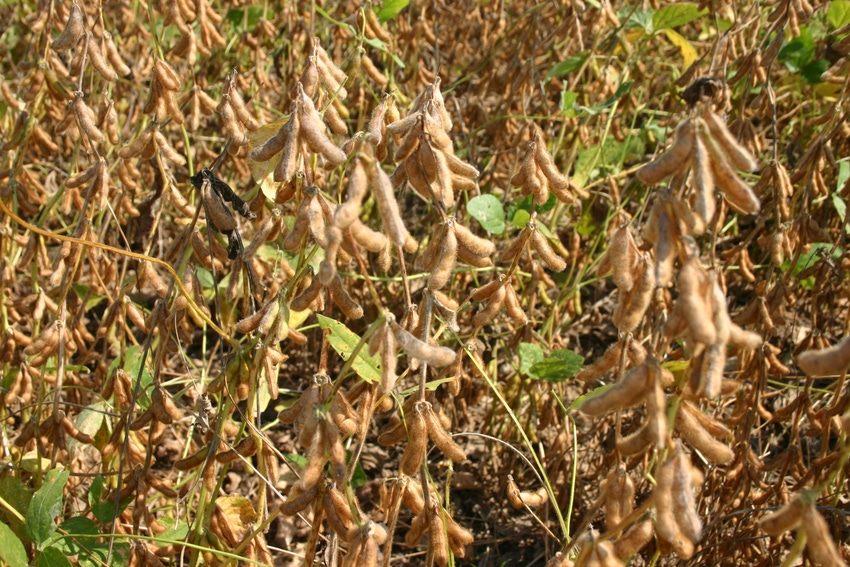
Sadly, off-target herbicide drift leading to damaged crops isn’t new to Mid-South farmers. However, the concerns have become more pronounced with dicamba being illegally applied over-the-top of Xtend soybeans.
Unfortunately, damaged crops are only part of a set of problems.
“What’s happening is terrible on many fronts with many moving parts,” says Larry Steckel, University of Tennessee weed specialist. “The PPO resistance in pigweed has gotten much worse. More and more growers are saying they’re getting less and less action from Flexstar, Blazer and Cobra. And now this happens?”
The dicamba drift, says Bob Scott, “is an absolute shame. There’s blame to pass around to many facets of agriculture. You have to ask if the technology should have been released without the new herbicide formulations. There’s no excuse -- no excuse -- for making off-label applications. It looks like there needs to be some sharper teeth in the regulatory side. Guys with fields that have been drifted on won’t file complaints with the Plant Board. It’s just a mess and it’s irritating. This is really having ramifications, and setting up potential future problems, up and down the line.
“This is a big, black eye for agriculture,” the Arkansas Extension weed specialist continues. “And we’ve warned repeatedly that (federal agencies) are paying attention. I understand the EPA, the FDA, the USDA – which interviewed me about this -- are all asking questions.”
Further, “Dow folks are also worried that their Enlist crops, which they held back this year, are going to be lumped in with all the dicamba problems.”
In Arkansas, “we’ve been trying to let affected growers know what to expect in terms of the injury progression, expected yield and those sorts of things. This is just one more indication how desperate growers are for some solid pigweed control options.”
For Scott and colleagues, drift has been a concern “all along. Even with the new formulations that will be registered, the cheaper, more volatile formulations will still be available. Well, if they’re being pinched financially, some guys will make the unfortunate decision to go with an unlabeled generic.
“And remember: the new formulations aren’t non-volatile but have lower volatility. It’s an odd situation because we can’t recall a technology like this being released without a corresponding herbicide. We had Roundup Ready, LibertyLink – none released without a herbicide.”
EU approval
A potential problem was put to bed on Friday (July 22) when Monsanto announced the European Commission had granted import approval for the soybeans. Nervousness preceded the announcement because of fears Mid-South farmers wouldn’t be able to find a home for the crop this fall.
“Monsanto can now look forward to a full system launch in the United States in 2017 and continues to be in a strong position to supply roughly 15 million U.S. soy acres when the selling season arrives,” said a press release.
If approval had been granted earlier, “We’d have had a bunch more planted this spring but grain companies flat out told farmers they wouldn’t be taking the beans,” says Steckel.
Assuming grain companies will now accept Xtend soybeans, the significance of the EU approval seems huge. How significant?
Earlier this season, Jeremy Ross, Arkansas Extension soybean specialist, began hearing rumors “certain elevators weren’t going to take Roundup Ready 2 Xtend soybeans because the EU hasn’t approved them.”
Ross called a half dozen of the bigger grain companies and asked three questions.
“First, will you be accepting dicamba beans this fall? Everyone’s answer was some version of ‘currently we don’t accept dicamba soybeans and we won’t be unless something changes in the EU before harvest.’ So, all this hinges on getting approval for export to the European Union.
“It’s worth noting that Dow’s Enlist soybeans haven’t gotten approval from China yet.
“Second, what is the acceptable tolerance level? That ranged everywhere from zero to a percent, or two.
“Third, is there any kind of quick test to check for the presence of dicamba? Some said they’d heard there could be a test but weren’t sure if they’d be able to check a load coming across the scales.”
How many?
Although happy with the EU approval, Ross terms the drift situation “a mess and it seems it will continue to be.”
How many acres of Xtend soybeans are planted in the Mid-South?
Currently, says Ross, “we’re being told the Mid-South Delta has about 100,000 acres of Asgrow dicamba soybeans. That doesn’t account for acreage from smaller soybean seed companies so we could be sitting on a substantially higher amount. If these soybeans are good – and the ones I’ve seen in the field look really good – that’ll be a bunch of bushels to deal with.”
In Tennessee, Steckel is unsure “what the EPA is thinking about this but it can’t be good. They’re definitely watching.”
Despite the widespread drift damage, Monsanto expects the new dicamba formulations to be shown the green light. Miriam Paris, the company’s U.S. soybean marketing manager, says the “approvals for in-crop use of dicamba are in the late stages of review by the EPA and are tracking for a late summer/early fall approval.”
About the Author(s)
You May Also Like




